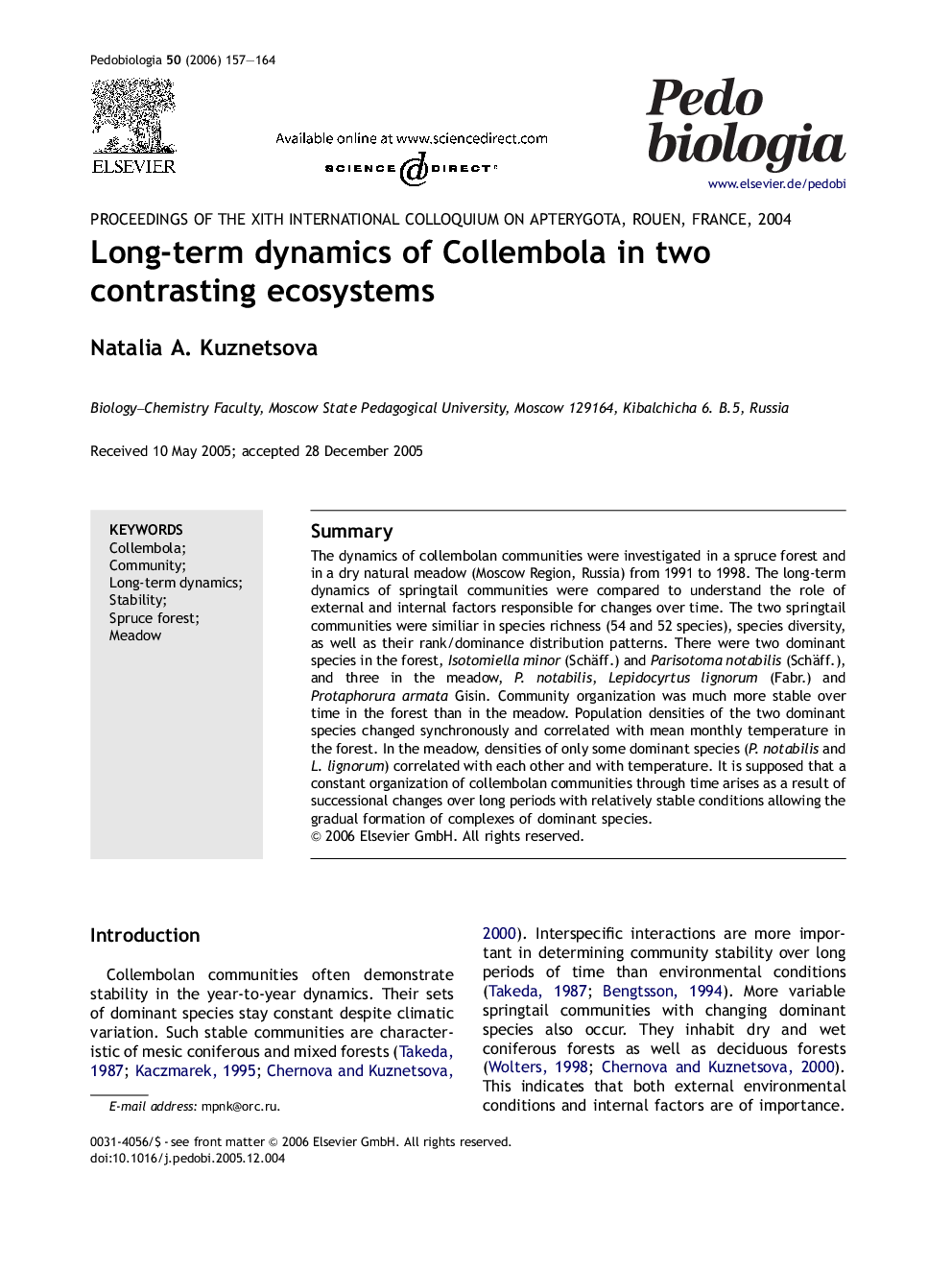| Article ID | Journal | Published Year | Pages | File Type |
|---|---|---|---|---|
| 2061385 | Pedobiologia | 2006 | 8 Pages |
SummaryThe dynamics of collembolan communities were investigated in a spruce forest and in a dry natural meadow (Moscow Region, Russia) from 1991 to 1998. The long-term dynamics of springtail communities were compared to understand the role of external and internal factors responsible for changes over time. The two springtail communities were similiar in species richness (54 and 52 species), species diversity, as well as their rank/dominance distribution patterns. There were two dominant species in the forest, Isotomiella minor (Schäff.) and Parisotoma notabilis (Schäff.), and three in the meadow, P. notabilis, Lepidocyrtus lignorum (Fabr.) and Protaphorura armata Gisin. Community organization was much more stable over time in the forest than in the meadow. Population densities of the two dominant species changed synchronously and correlated with mean monthly temperature in the forest. In the meadow, densities of only some dominant species (P. notabilis and L. lignorum) correlated with each other and with temperature. It is supposed that a constant organization of collembolan communities through time arises as a result of successional changes over long periods with relatively stable conditions allowing the gradual formation of complexes of dominant species.
